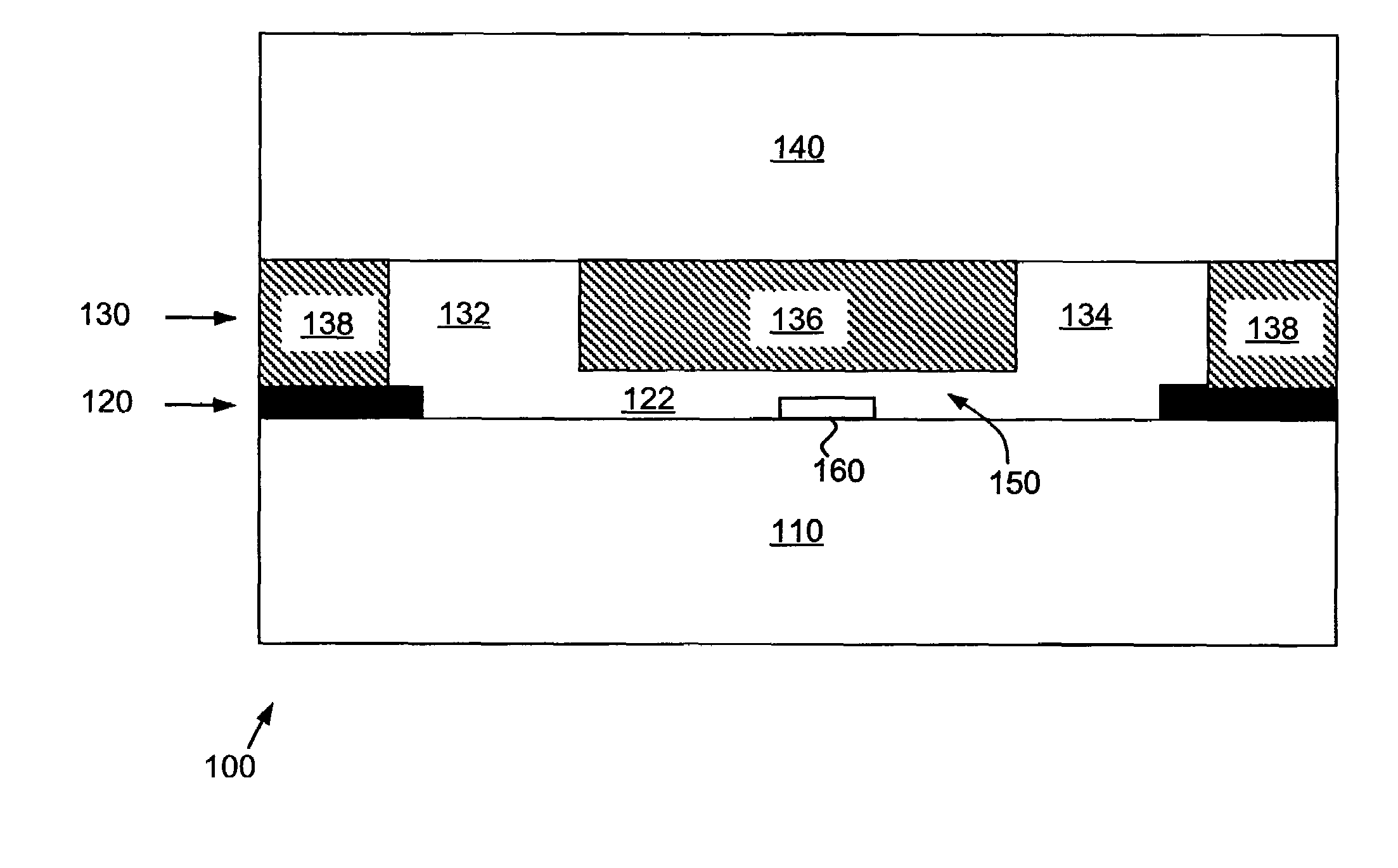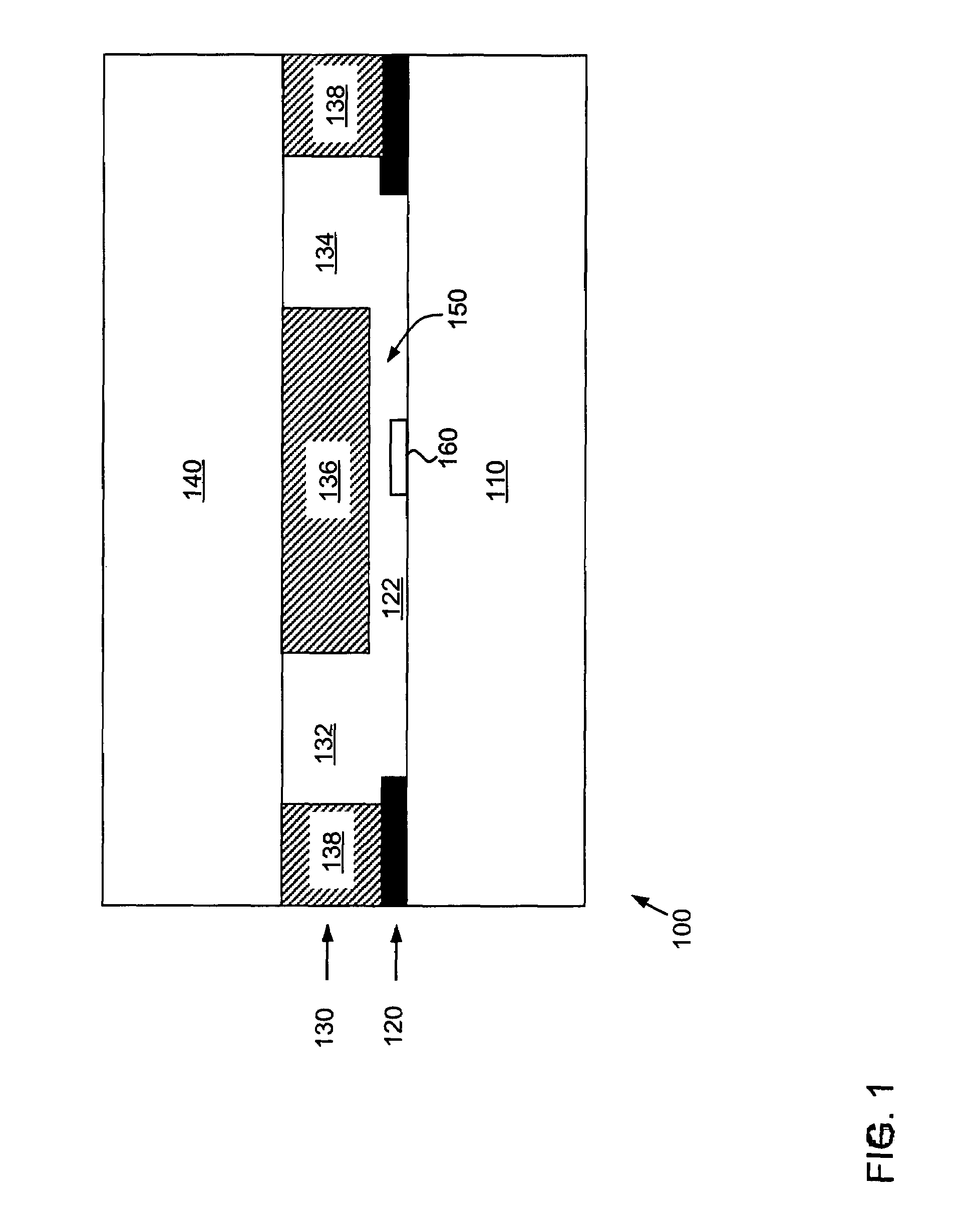Multilayer microfluidic device
a microfluidic device and multi-layer technology, applied in the field of microfluidic devices, can solve the problems of elastomeric microfluidic structures that can buckle or collapse, and the time and power required for fabrication are relatively high,
- Summary
- Abstract
- Description
- Claims
- Application Information
AI Technical Summary
Benefits of technology
Problems solved by technology
Method used
Image
Examples
Embodiment Construction
[0030]FIG. 1 shows a schematic cross-section of a microfluidic device 100 according to the present invention. Microfluidic device 100 has four layers, including a rigid substrate layer 110, a patterned rigid layer 120, a patterned elastomeric layer 130, and a rigid support layer 140. In addition, the microfluidic device has a sensor 160. The patterned rigid layer 120 has at least one opening 122. Preferably, this opening extends through the entirety of patterned rigid layer 120, as shown in FIG. 1. The patterned elastomeric layer 130 also has at least one opening, such as openings 132 and 134. Preferably, this opening(s) extends through the entirety of patterned elastomeric layer 130, as shown in FIG. 1. Also preferably, the height of the opening(s) in the elastomeric layer can range between being a fraction of the width of the opening(s) and about two times the width of the opening(s). The alignment of openings 122, 132, and 134, define microfluidic structures, such as sensing chan...
PUM
| Property | Measurement | Unit |
|---|---|---|
| thickness | aaaaa | aaaaa |
| thickness | aaaaa | aaaaa |
| thickness | aaaaa | aaaaa |
Abstract
Description
Claims
Application Information
 Login to View More
Login to View More - R&D
- Intellectual Property
- Life Sciences
- Materials
- Tech Scout
- Unparalleled Data Quality
- Higher Quality Content
- 60% Fewer Hallucinations
Browse by: Latest US Patents, China's latest patents, Technical Efficacy Thesaurus, Application Domain, Technology Topic, Popular Technical Reports.
© 2025 PatSnap. All rights reserved.Legal|Privacy policy|Modern Slavery Act Transparency Statement|Sitemap|About US| Contact US: help@patsnap.com



